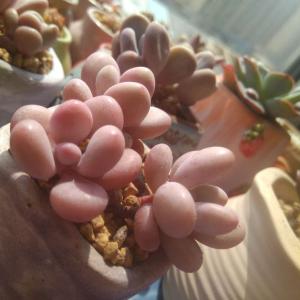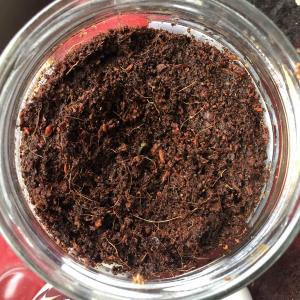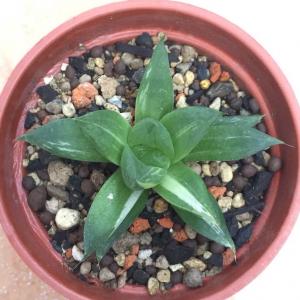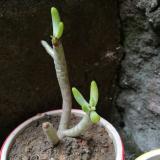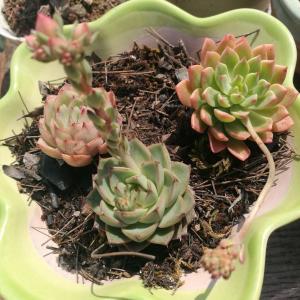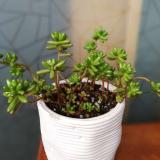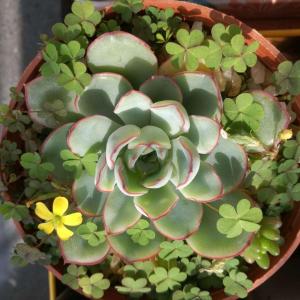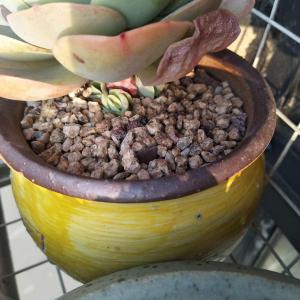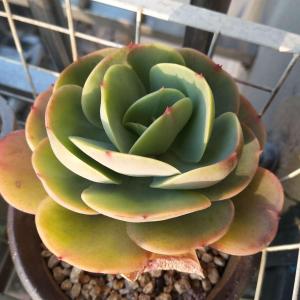求助
llllllxz
2018年03月26日

请问绣球这几根枝条一直不长叶子,是不是可以剪掉了?最早大概3月11日开始长的叶子。
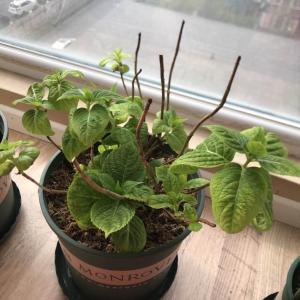


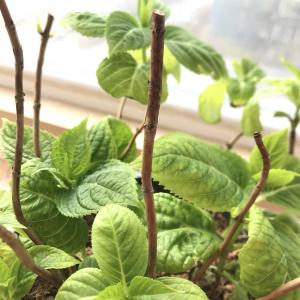




0
0
llllllxz:@sunnyzou 谢谢!
sunnyzou:芽点死了就可以毫不犹豫剪掉了。从图片上看可以剪掉了
文章
Miss Chen
2018年03月26日

Description: This perennial wildflower is about 3-5' tall; it is erect and branches occasionally. The stems are light green, pale reddish green, or purple; the upper stems have short bristly hairs, while lower stems are glabrous and sometimes glaucous. The lower and middle leaves are opposite, while the upper leaves are alternate; they spread outward from the stems. The leaf blades are up to 7" long and 3" across; they are broadly lanceolate to ovate with long slender tips and sharply serrated margins. The upper surface of each leaf is dark green and rough in texture, while the lower surface is light green and nearly hairless. The petioles of the leaves are about ½–1½" long; they are somewhat winged near the leaf blade, but become more narrow toward the stem. The upper stems terminate in yellow flowerheads on naked stalks (peduncles) of varying length. Each flowerhead is about 2–3½" across, consisting of 8-12 ray florets that surround numerous disk florets in a central disk. The petal-like ray florets are bright yellow and oblong in shape, while the disk florets are yellow and tubular. The base of each flowerhead consists of several overlapping bracts. These floral bracts are light green, linear-lanceolate, and ciliate along their margins; they often curve backward. The blooming period occurs from mid-summer to early fall and lasts about 1–1½ months. Each fertile floret is replaced by a dark achene about 1/8" (3 mm.) in length (or a little longer) that is oblongoid and slightly flattened. The root system is fibrous and rhizomatous. Vegetative colonies of plants are often formed from the rhizomes.
Cultivation: The preference is partial sun or dappled sunlight, moist to mesic conditions, and a rich loamy soil. Like other perennial sunflowers, this species may spread aggressively in some situations.
Range & Habitat: The native Ten-Petal Sunflower is occasional in Illinois and widely scattered throughout the state; it is largely absent in south-central Illinois (see Distribution Map). Habitats include open woodlands, woodland borders, savannas, partially shaded areas along rivers, meadows, and thickets. Occasional disturbance is beneficial if it prevents excessive shade from overhead trees.
Faunal Associations: The flowerheads attract many kinds of insects, especially bees (both long-tongued & short-tongued), which suck nectar and collect pollen from the florets. Other visitors include butterflies, wasps, and various kinds of flies. An impressive variety of insects feed on various parts of Helianthus spp. (Sunflowers), including beetles, weevils, and the caterpillars of some butterflies and moths (see Insect Table for some examples). The seeds are an attractive source of food to many upland gamebirds and granivorous songbirds (see Bird Table). Muskrats occasionally feed on the leaves and stems; they use the latter in the construction of their lodges in wetlands. Young plants are occasionally eaten by rabbits, deer, and groundhogs; they are also palatable to many kinds of livestock.

Photographic Location: A woodland opening at Meadowbrook Park in Urbana. The long slender bracts of a flowerbud can be seen in the upper leaf corner of the upper photograph. In the lower left of the same photograph, the long slender tip of a leaf blade is fully visible. Both photographs show the long pointed teeth along the margins of the leaf blades.
Comments: This is an attractive woodland sunflower that should be cultivated in gardens more often. There are many species of sunflowers in Illinois (both prairie and woodland) and they are often difficult to identify. Ten-Petal Sunflower has the following characteristics that are useful in identifying this species: 1) the margins of its leaf blades have teeth that are long and pointed, 2) the tips of its leaf blades are unusually long and slender, and 3) the floral bracts are unusually long and slender. However, some populations of plants may have shorter teeth on the leaf margins.
Cultivation: The preference is partial sun or dappled sunlight, moist to mesic conditions, and a rich loamy soil. Like other perennial sunflowers, this species may spread aggressively in some situations.
Range & Habitat: The native Ten-Petal Sunflower is occasional in Illinois and widely scattered throughout the state; it is largely absent in south-central Illinois (see Distribution Map). Habitats include open woodlands, woodland borders, savannas, partially shaded areas along rivers, meadows, and thickets. Occasional disturbance is beneficial if it prevents excessive shade from overhead trees.
Faunal Associations: The flowerheads attract many kinds of insects, especially bees (both long-tongued & short-tongued), which suck nectar and collect pollen from the florets. Other visitors include butterflies, wasps, and various kinds of flies. An impressive variety of insects feed on various parts of Helianthus spp. (Sunflowers), including beetles, weevils, and the caterpillars of some butterflies and moths (see Insect Table for some examples). The seeds are an attractive source of food to many upland gamebirds and granivorous songbirds (see Bird Table). Muskrats occasionally feed on the leaves and stems; they use the latter in the construction of their lodges in wetlands. Young plants are occasionally eaten by rabbits, deer, and groundhogs; they are also palatable to many kinds of livestock.

Photographic Location: A woodland opening at Meadowbrook Park in Urbana. The long slender bracts of a flowerbud can be seen in the upper leaf corner of the upper photograph. In the lower left of the same photograph, the long slender tip of a leaf blade is fully visible. Both photographs show the long pointed teeth along the margins of the leaf blades.
Comments: This is an attractive woodland sunflower that should be cultivated in gardens more often. There are many species of sunflowers in Illinois (both prairie and woodland) and they are often difficult to identify. Ten-Petal Sunflower has the following characteristics that are useful in identifying this species: 1) the margins of its leaf blades have teeth that are long and pointed, 2) the tips of its leaf blades are unusually long and slender, and 3) the floral bracts are unusually long and slender. However, some populations of plants may have shorter teeth on the leaf margins.
0
0





